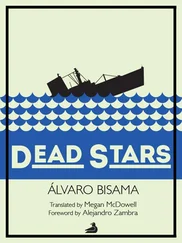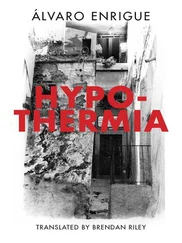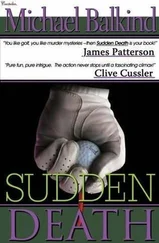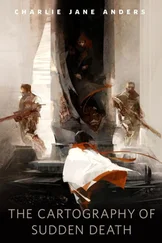All of this explains why no one in Mexico — or Spain either, I presume — has ever seen Cortés’s coat of arms. It has four fields, the first of silver with the double-headed eagle of the Habsburgs representing the Holy Roman Empire, which the conquistador had expanded by dimensions too great to be calculated at the time. The second field is of sable, stamped with the three crowns of the Triple Alliance, which Cortés had overthrown when he subdued the Aztec empire on August 13, 1521, Saint Hippolytus’s Day. A third is of gold with a lion celebrating Cortés’s bravery, and a fourth of blue with a sketch of Mexico City atop the waters. Around the coat of arms is a kind of garland wreathing the four emblems, a chain from which hang the seven decapitated heads of the seven caciques of the towns of Lake Texcoco. Good taste was never Cortés’s strong suit.
The coat of arms and the weapons never reached Mexico, because at the time of Cortés’s death, the conquistador’s daughter Juana was about to turn fourteen and her mother had already decided to return to Spain to find her a match in keeping with their infinite wealth — the worst possible scenario for poor Lope Rodríguez, who lost hope of any profit in the matter.
The Cortés ladies settled in Castilleja de la Cuesta and received the arms and the scapular in a solemn ceremony at which all the ragtag final companions of the conquistador were present, and which lasted about the time it takes to boil an egg. Then they focused their attention on making a marriage with the house of Alcalá, which didn’t take much longer than the surrender of arms, because like all the nobles of Old Spain — as Juana Cortés dubbed the country that she was already beginning to find stifling — they were walled in by debt and clearly in decline.

From the perspective of the Counter-Reformation Curia, preoccupied as it was with moral hygiene, Cardinal Francesco Maria del Monte had every imaginable fault. He was Venetian, he represented the sinister interests of the Medici and the French crown in the Vatican, and he was furnished with bottomless coffers that he basically used to corrupt everything — beginning with his own flesh. His list of friends included the major bankers of the city and a distinguished host of cardinals who could, if they chose, make life difficult for the pope. He was also proprietor of a noteworthy assortment of musicians, painters, poets, and castrati capable of circulating the most devastating gossip all over Rome. This confluence of power didn’t make del Monte infallible — no one but the pope was infallible in those days of hard-line bishops and inquisitors with free rein — but he was tolerated to a nearly unique degree. His whims and pleasures far overstepped the incidentally rather foggy line of the acceptable, and even the legal.
Nevertheless, Cardinal del Monte died at a ripe old age, in possession of a moderate fortune — he lived well, but he wasn’t a thief — and good humor. If he never became pope, it was only because the recently anointed Philip IV of Spain forced the vote from afar in the conclave of 1621 in order to close the gates of St. Peter’s to the French crown. He lost the last Sistine round to Alessandro Ludovisi, who ruled as Gregory XV.
Despite all the power that del Monte accumulated, no visitor in the Rome of his day could say that he hadn’t been received with courtesy and generosity at the Palazzo Madama, from which the cardinal manipulated Vatican politics with a silk-gloved hand for three decades; no one ever claimed that his operations — intrigue-filled and complex, given that he was the representative of the Medici grand duke of Tuscany in the city — had inflicted pain on a body or losses upon any coffers; and no one, absolutely no one, would have ventured to doubt his prodigious nose for objects of art that would increase exponentially in value.
If del Monte bought a work from a living painter and hung it in his celebrated music salon, the painter was assured inclusion on a short list of candidates for the decoration of an altar in the next chapel or a wall of the next cloister.
The art historian Helen Langdon has studied the collection of paintings amassed by Cardinal del Monte at the Palazzo Madama. The cardinal’s Leonardos, Raphaels, and Michelangelos may have been copies, but he had five authentic Titians, a Giorgione, and several Licinios and Bassanos. And he was an enthusiastic collector of portraits, in imitation of the grand duke.
The inventory of his collections numbers more than 600 paintings — as well as ceramic pieces and sculptures — of which 277 were “unframed paintings measuring four palms each, of various popes, emperors, cardinals, dukes and other illustrious men and even some women.” When he moved into the Palazzo Madama, del Monte contracted the services of the painter Antiveduto Grammatica — his real name — to supply him with copies of portraits. According to Giovanni Baglione in his Vite de’ pittori, scultori ed architetti moderni , Antiveduto Grammatica was, in his day, “the great painter of heads.”
It’s likely that del Monte met Michelangelo Merisi da Caravaggio at Grammatica’s workshop, where the artist labored during his years of poverty and obscurity, painting giant heads at piecework rates.
The majority of the portraits that adorned the walls of the Palazzo Madama are lost, and for good reason: they were junk, copies of copies made in the workshop of a talentless maestro whose name lives on only because it is associated with Caravaggio’s youth. The few that it has been possible to identify show no sign of Merisi’s master hand, whether because he didn’t work on them — he wasn’t Grammatica’s only assistant — or because he turned them out mechanically, with no thought of proving anything to anyone. By then he was trying to make a place for himself as a painter with his own workshop, in the city that was the very navel of the art of his day, and he must have believed that investing effort in work that didn’t even make him a good living was a waste of time.
What we are left with instead are several heads — not all of them gigantic — of Caravaggio himself. He appears in the grips of fever in Sick Bacchus , and stricken with anguish in the face of death in The Martyrdom of Saint Matthew . On May 29, 1606, he killed Ranuccio Tomassoni on a tennis court and was sentenced to death by beheading. Over the following years he painted his own severed head in two works: David with the Head of Goliath —which he sent to Scipione Borghese in return for pleading his cause before Pope Paul V — and Salome with the Head of John the Baptist —which he sent as a gift to the grand master of the Knights of Malta to request the protection of the order when the pope’s executioners were closing in on him.
He had also painted himself as an adolescent in The Musicians , which he completed under the protection of Cardinal del Monte after he came to live on the lower floor — the servants’ floor — of the Palazzo Madama in 1595. The lasciviousness of his half-open mouth, the succulence of his naked shoulders, the supplicatory look he gives the sole spectator of the painting — it was the first work that he painted for the cardinal’s exclusive enjoyment — makes one imagine that he feels a gratitude that is at the very least voluptuous. In The Musicians , he portrays himself as a boy of fourteen or fifteen, though he was already a full-fledged and well-seasoned twenty-four when he painted it. This is unsettling, because during the talks of the conclave of 1621, the argument with which the representatives of Philip IV put an end to Cardinal del Monte’s previously unstoppable campaign for the papal seat was that he ran a charitable mission recruiting boys of twelve or thirteen to be educated under his personal supervision in the palace. According to the cardinals’ accusations, which are known because they were posted anonymously on the statue of Pasquino in Rome, del Monte recruited boys “not on the merits of their intelligence or neediness, but for their beauty.”
Читать дальше













